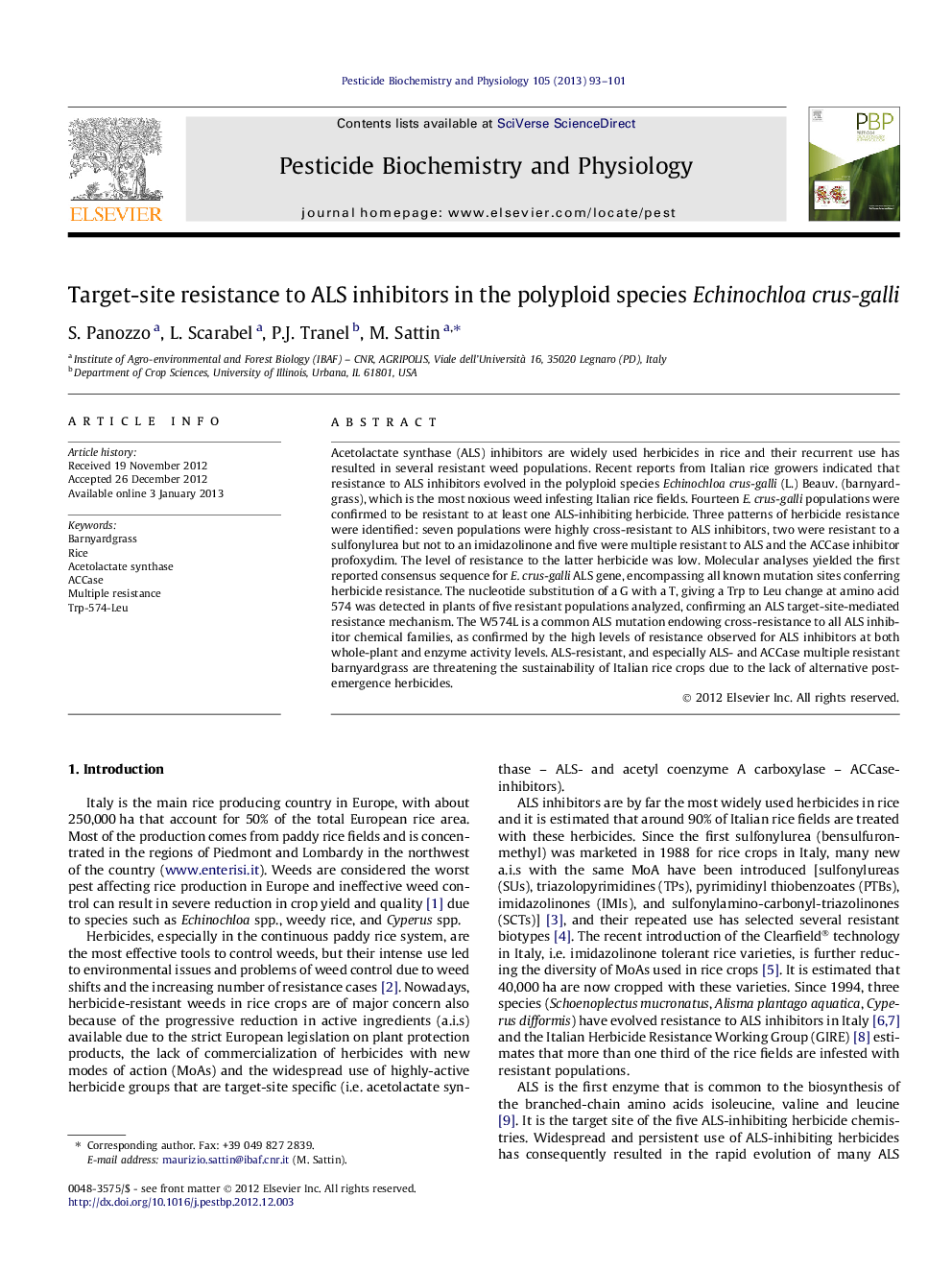| کد مقاله | کد نشریه | سال انتشار | مقاله انگلیسی | نسخه تمام متن |
|---|---|---|---|---|
| 2009433 | 1066665 | 2013 | 9 صفحه PDF | دانلود رایگان |

Acetolactate synthase (ALS) inhibitors are widely used herbicides in rice and their recurrent use has resulted in several resistant weed populations. Recent reports from Italian rice growers indicated that resistance to ALS inhibitors evolved in the polyploid species Echinochloa crus-galli (L.) Beauv. (barnyardgrass), which is the most noxious weed infesting Italian rice fields. Fourteen E. crus-galli populations were confirmed to be resistant to at least one ALS-inhibiting herbicide. Three patterns of herbicide resistance were identified: seven populations were highly cross-resistant to ALS inhibitors, two were resistant to a sulfonylurea but not to an imidazolinone and five were multiple resistant to ALS and the ACCase inhibitor profoxydim. The level of resistance to the latter herbicide was low. Molecular analyses yielded the first reported consensus sequence for E. crus-galli ALS gene, encompassing all known mutation sites conferring herbicide resistance. The nucleotide substitution of a G with a T, giving a Trp to Leu change at amino acid 574 was detected in plants of five resistant populations analyzed, confirming an ALS target-site-mediated resistance mechanism. The W574L is a common ALS mutation endowing cross-resistance to all ALS inhibitor chemical families, as confirmed by the high levels of resistance observed for ALS inhibitors at both whole-plant and enzyme activity levels. ALS-resistant, and especially ALS- and ACCase multiple resistant barnyardgrass are threatening the sustainability of Italian rice crops due to the lack of alternative post-emergence herbicides.
Figure optionsDownload as PowerPoint slideHighlights
► Several populations of E. crus-galli were found to be resistant to ALS inhibitors.
► Different resistance patterns and levels were detected.
► Some populations were multiple resistant to ALS and ACCase inhibitors.
► An altered target enzyme was responsible for ALS resistance.
► The first ALS gene sequence of E. crus-galli was obtained.
Journal: Pesticide Biochemistry and Physiology - Volume 105, Issue 2, February 2013, Pages 93–101